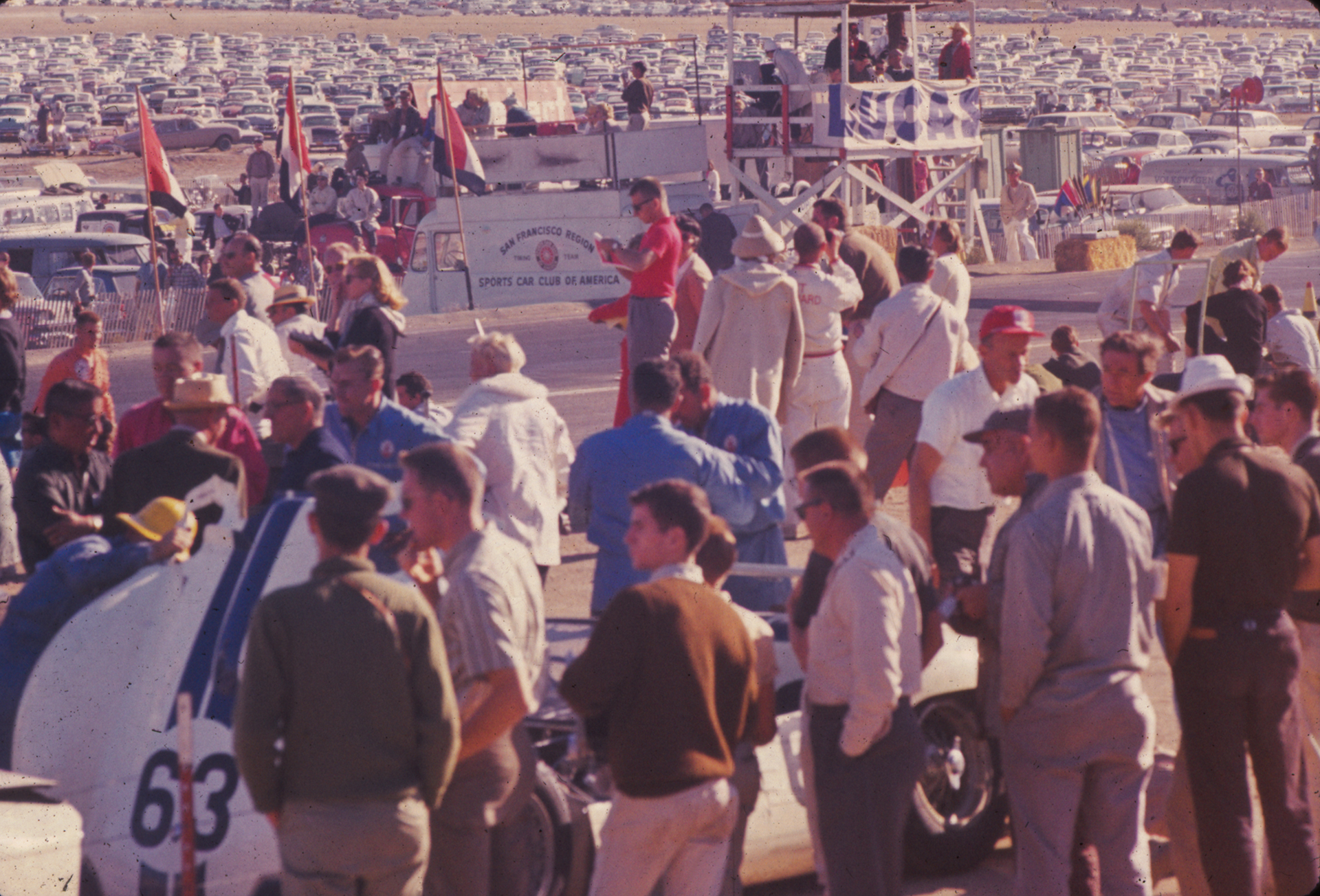

As the Fifties came to a close the American sports car racing scene was divided into two camps. The SCCA wanted to maintain an amateur status for the many regional races, on the one hand. While the ascendancy of the World Sports Car Championship was generating a desire to introduce professional racing in the States, with its spectator gate and prize money, on the other.
The former had enjoyed increasing popularity both with its club racing grids and the burgeoning sports car enthusiast demographics over the formative decade.
Much of this success was due, in no small part, to a group of team owners who were bringing large displacement competition to these events. There was John von Neumann, who owned the LA Ferrari dealership, and also the western United States VW franchise and dealerships. There was also the infamous Tony Parravano, The Man with the Golden Wrench, as in don't go near that engine! The hard drinking John Edgar, the wealthy sportsman Frank Arciero and the East Coast's renown impresario Briggs Cunningham. When the large displacement Ferrari and Maserati were retired from Competition by the FIA rules in Europe, they became the signature racing hardware of the American racing circuits. Briggs, for his part brought the Chrysler Firepower engine to cars of his own creation, mainly on the East Coast. And we have to mention in passing, Lance Reventlow, and his Traco tuned Chevy V8 powered Scarabs.
These were robust cars, pushing the outter edge of performance in the imagination of the highly engaged enthusiast public, either trackside at Watkins Glen, Limerick, Road America, Riverside and Laguna Seca, or dramatically portrayed in print.
Then as the Fifties came to a close, many of the best American schooled racers, Phil Hill, Dan Gurney, Carroll Shelby, Richie Ginther, to name but a few, saw the benefit of a pay day to secure their financial position as professional racers, and went to Europe. So was bred the controversy between the SCCA amateurism and professional sanctioned races by USAC.
Interestingly this coincided with the original private team players, Von Neumann, Edgar, Parravano, Cunningham and Reventlow, leaving the field of play. Another interesting aspect of the change was that the new nimble cars from Lotus and Porsche were consigning
As a result the Sports Car Racing Association of the Monterey Peninsula, or SCAMP, who had managed the circuit since 1957, went looking for sponsorship to make next year's race a professional event.
Ironically racing was much changed for 1960. At Ferrari Carlo Chiti was performing a futurist transformation, which was to become apparent the following year. Maserati's large displacement engines, both the six and the eight, were finding a home in the new line of road cars. For competition Alfieri pinched the parsimonious pocketbook of the Orisi to create an entirely new car: a inline twin cam four of two liters. To be fit into one of the most ingenious space frame designs of the period. At Lotus and Porsche, the new philosophy of engineering their sports racing cars based directly on the open wheel Formula cars was in full swing with the 19, for the former, and the 718 RS 60 for the latter.
The irony pointed out above was this, last year's Laguna race which had the Lotus and Porsche as the premier competitors, replacing the Ferrari and Maserati, didn't seem to satisfy the spectators. This year's would be a grid made up of the premier Formula 1 & 2 based Lotus and Porsches, with the new Maserati Type 61, or Birdcage, with an experimental prototype Jaguar, and some Chevy powered racers, in Lister and Stingray clothing. The true character of this new San Francisco Examiner sponsored, USAC sanctioned, Road Racing Championship Laguna Seca, of October 23rd, was to be defined by the race that it preceeded: the United States Grand Prix at Riverside on November 20th. As a result the field of competitors at Laguna Seca were the premier racers of the period, in the year's most advanced hardware. The following pages of this photo essay, taken at the race, will reveal the names and Marques that ran that day.
To truly appreciate the modernist experience presented here. All these photographs were taken using Kodak's new high speed Ektachrome 160 ASA 35mm slide film, which had only been released the year before.
the old fire breathing Ferrari and Maserati and Astons to history, on the smaller, tighter American circuits and with their shorter event competitions.
An example of this confluence of events is brought into clear focus at the circuit of our photo essay presented here: Laguna Seca.
In 1959, two weeks following the very successful LA Times sponsored race at Riverside, won by Phil Hill in a Ferrari, Laguna Seca held its most important race of the season, as an SCCA amateur event. Attendance was less than half of Riverside.
Before the Historics
Click paddock photo to enter

